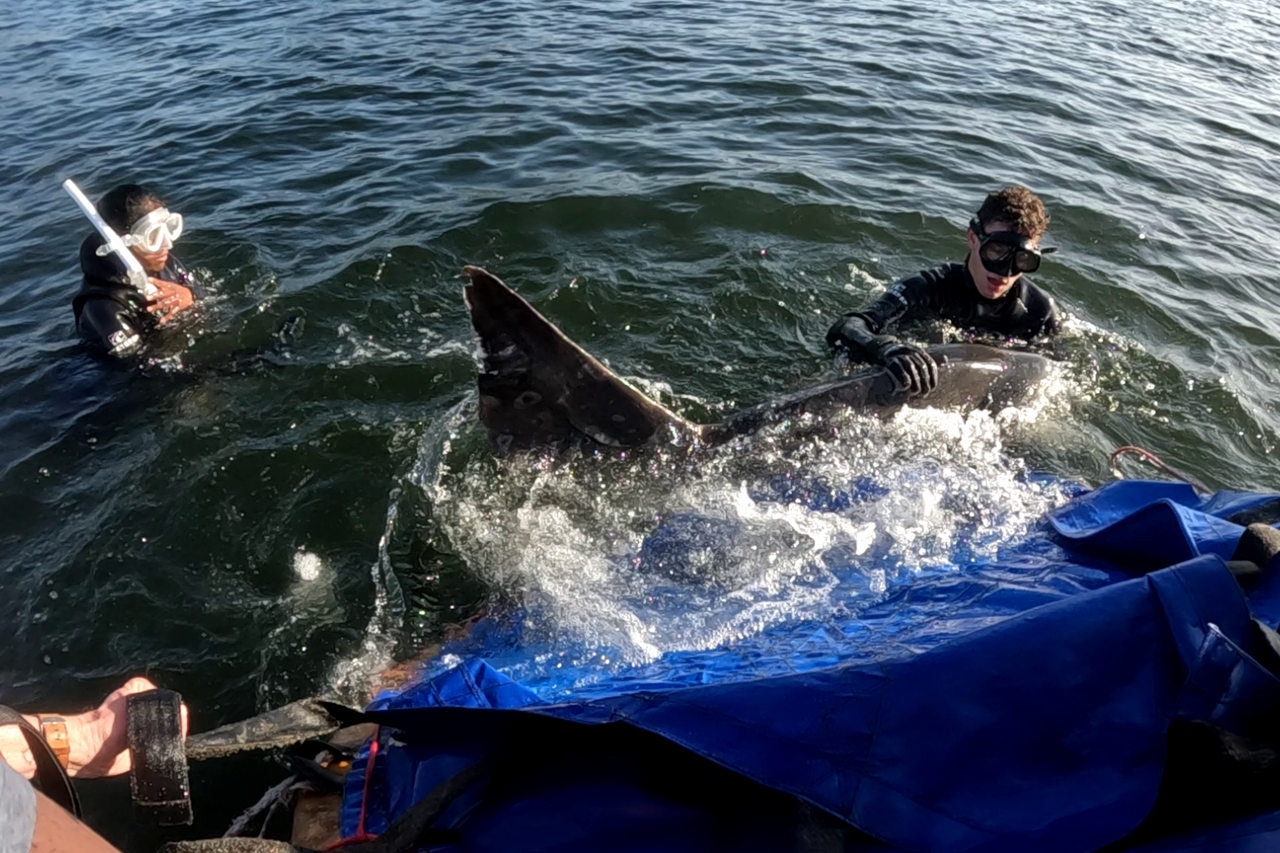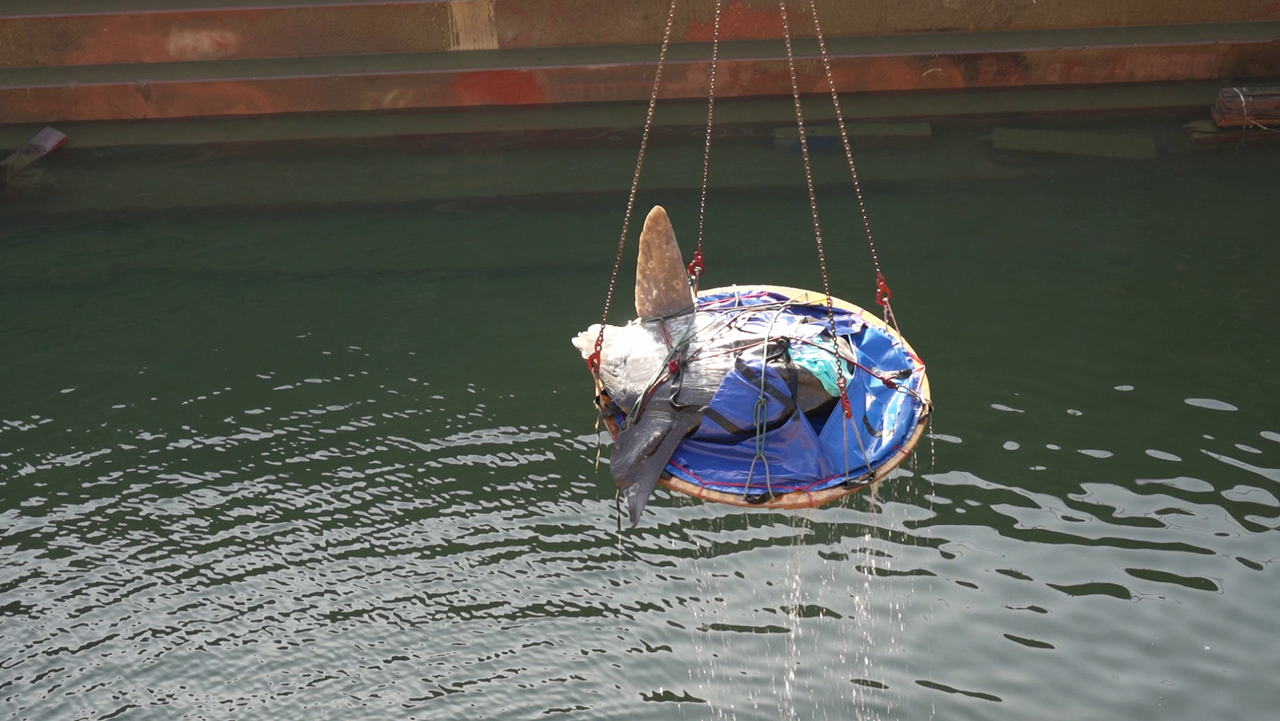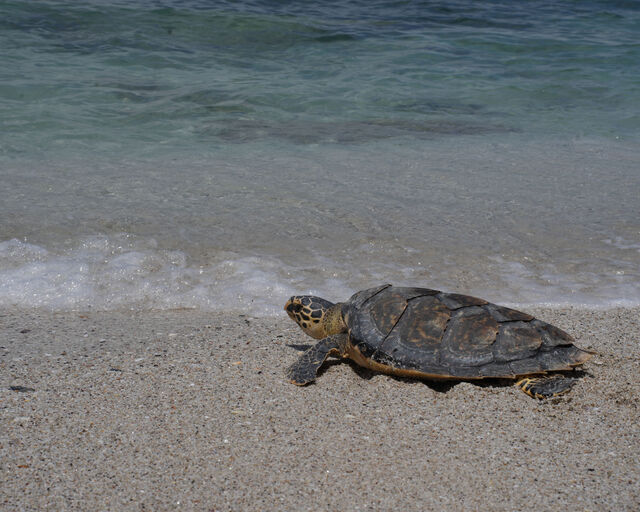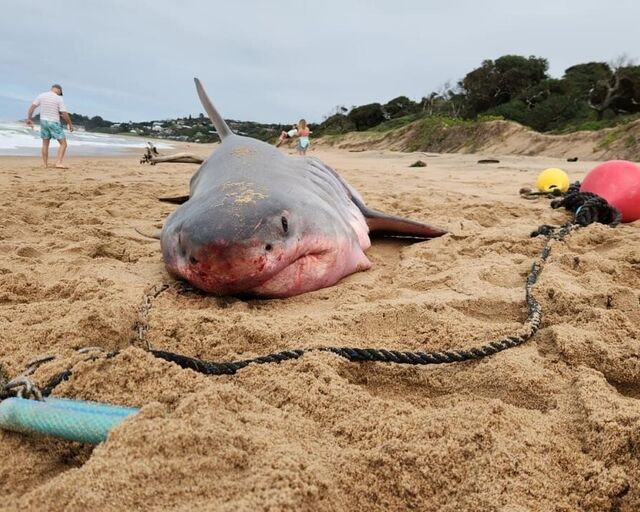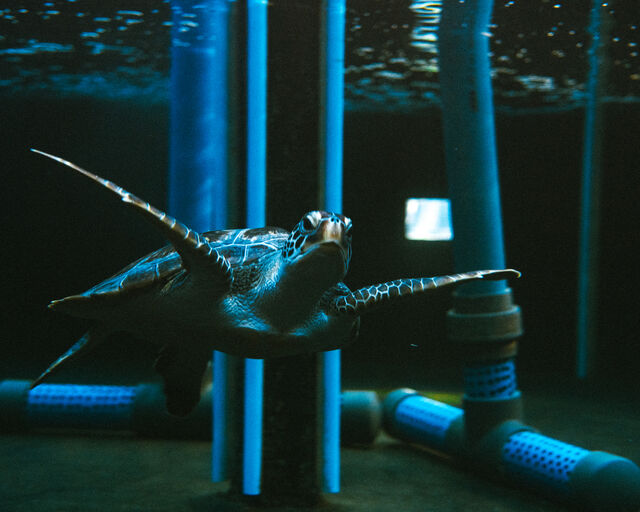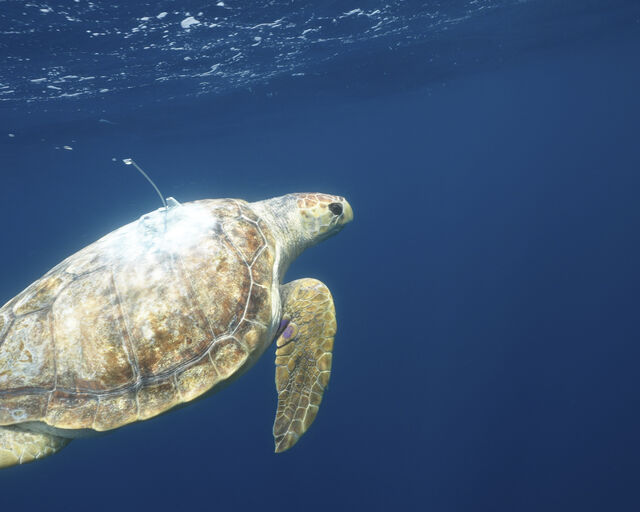The Two Oceans Aquarium rescued a large sunfish from the Robinson Dry Dock in the V&A Waterfront yesterday afternoon. The fish had become trapped in the dock as the water was being drained out of it and had to be airlifted out via a crane.
Claire Taylor, Marine Animal Welfare Specialist for the Two Oceans Aquarium received a call from Johan Coetzee, the Dock Master, who manages the dry docks on behalf of Transnet and the Cape Town Port Authority at around 13h00 on Thursday 9 June 2022 alerting her of the sunfish’s predicament. While Claire put a call through to the Aquarium to activate a rescue team, Two Oceans Aquarium Foundation Head of Research Dr Nathalie Viljoen and Research Assistant Calley Chateau-Cyster, got hold of Tino Williams, the dry dock pump operator, who agreed to drop the water in the dock to a level at which the rescue team could safely work. At the same time Brett Glasby, Marine Wildlife Management Programme Co-ordinator managed to source a crane and crane operator from Tandem Cranes.
The rescue team, comprising of Claire, Brett, Nathalie, Calley, retired ex-staff member Vincent Calder, aquarists Ayrton King and Daniel Seldon, and Educator Kirshia Govender, sprang into action as soon as the water was low enough for them to stand in the dry dock. “The distressed sunfish was quite weak, so it was fairly easy to flip it on its side to load it onto the stretcher,” said Calley. “Once it was safely secured on the stretcher, we swam it across to the steps of the dry dock where we collected biological measurements.” Together with the stretcher, the sunfish weighed 760kg, and had a total length (TL) of 160cm, a pre-caudal length (PCBL) of 122cm, and a total body depth (TBD) of 189cm. This data is shared with international researchers working on sunfish around the world.
Once the team had collected the necessary data the sunfish was hoisted by Tandem Cranes out of the dock and across to the waiting boat skippered by Claire and Vincent. “During the boat ride, we scooped buckets of water to pour onto the mouth of the sunfish and monitored its breathing. Once we were safely out of the harbour we jumped into the water and released the sunfish. We held on to it for a few minutes to check its breathing. Once it regained strength we all let go and it swam off strongly,” said Calley.
“Releases like this are always so inspirational as a team quickly pulls together and does what it is needed to safely rescue the animal. We are very grateful to the people managing the dry docks who always alert us to animals in distress and also to Tandem Cranes for helping us get this sunfish safely out of the dry dock. Teamwork really makes the dream work!” said Claire.
Sunfishes come into the Waterfront, Cape Town and Simonstown harbours every summer. They start appearing in October/November and are often sighted right through to May/June the following year. Unfortunately, they are often injured and/or disorientated. Sometimes they are trapped in the dry docks and Aquarium staff are called out to rescue them before the docks are drained of water. Calls are also received from the public to say that a strange fish is caught in the rocks or has beached itself. “We always respond to these calls and try to assist where possible,” said Claire.
Sunfish facts:
- Two species of sunfishes are generally found in the waters surrounding Cape Town: the ocean sunfish (Mola mola) and the sharptail sunfish (Masturus lanceolatus). However, the hoodwinker sunfish (Mola tecta) has also been sighted locally.
- Ocean sunfishes are found in all the oceans of the world, excluding the icy polar seas. Sharptail sunfishes are found only in warmer waters, thus they are extremely rare in the local waters. The rare slender sunfish (Ranzania laevis) which has been seen washed up on Cape beaches is a tropical species and prefers temperate conditions. Only ocean sunfishes have been displayed in the Aquarium.
- Ocean sunfish and sharptail sunfish attain a similar size of 3 m in length and a weight of 2000 kilograms, but the shape of the body is quite different, especially their ‘tails’. Sunfishes do not have tails as other fishes do - the caudal (tail) fin has been replaced by a rudder-like structure. The ocean sunfish has a rounded, wavy rudder. The sharptail’s rudder, as the name suggests, has a distinct point.
- All sunfishes have small mouths and the teeth are fused together in each jaw, forming a beak, like that of a parrot. The beak is internal and hidden from view. It is interesting to note that an animal that grows to such a large size feeds on jellies, which have very little nutritional value.
- Sunfishes are not considered edible as they consist mainly of cartilage and gristle and their flesh is soft and insipid. Also, the skin is extremely rough, similar to sandpaper in texture. While they are therefore not targeted species, they are increasingly being caught as bycatch which is a threat to their populations.
- Sunfishes are the largest bony fishes in the ocean. They are considered to be one of the most advanced fishes because of their highly specialised body form. They are also the most fertile of all fishes, producing up to 300 million tiny eggs.
